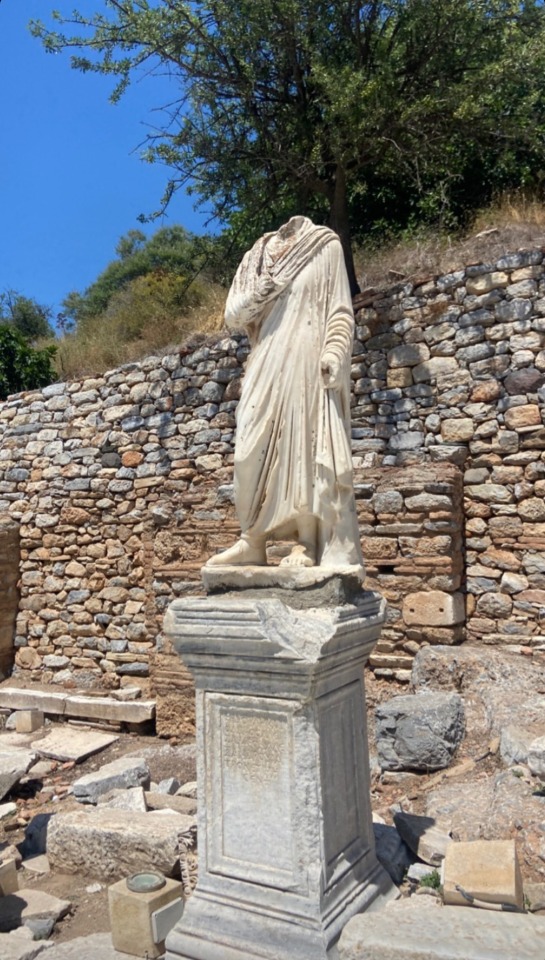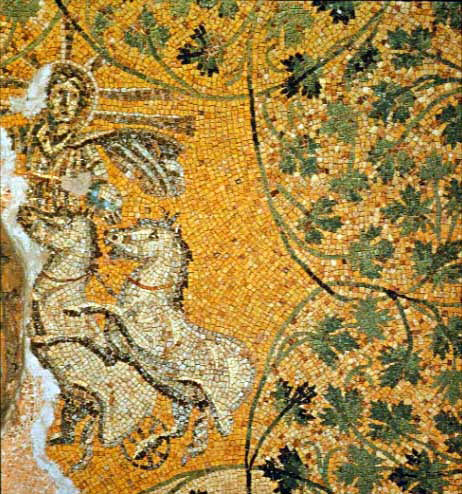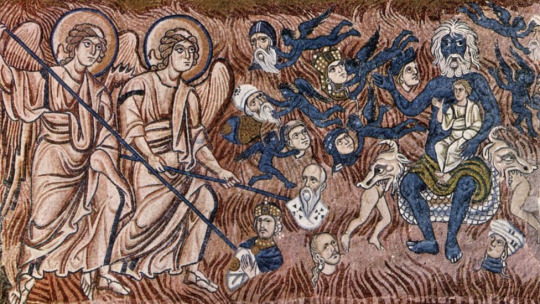#smyrna
Text

Torah scrolls from the Signora Synagogue in Izmir, Turkey. By Neil Foldberg.
869 notes
·
View notes
Text

Jean Lurçat (French, 1892-1966), Paysage de Smyrne [Smyrna Landscape], 1924. Oil on canvas, 65.1 x 92 cm.
117 notes
·
View notes
Text

💌 Souvenir de Smyrne 💌
#hades#persephone#ocs#interpretations: greek mythology#greek history au: phlegethon#Smyrna#Izmir#idk what other tags to add#creative outbreaks#ANYWAY this kicked my ass#but I needed to finish something in time for Valentine's Day#soon to be available on inprnt#yes also in greeting card format
126 notes
·
View notes
Text





hmmm..i was really sure on her secondary at first, but now i'm not. figured i'd throw out a poll to see what others thought i should do!
the dragon is Smyrna #88992129 ! i'm pretty sure about Harlequin and Beard but feel free to try other things anyway haha
thank you!
14 notes
·
View notes
Photo









Rupert Graves: Smyrna (1)
22 notes
·
View notes
Text


Streets and sidewalks
#travel#bookblr#photography#books and libraries#artists on tumblr#mountains#izmir#smyrna#old#todaynews
8 notes
·
View notes
Text



Library of Celsus
16 notes
·
View notes
Text
Submission:
Smyrna 1919-1921
Καλησπέρα!
Τις προάλλες κυκλοφορούσε αυτό το βίντεο, (ή μάλλον μερος του) στο X, δεν το ‘χα ξαναδεί,
https://m.youtube.com/watch?v=UItbTDsU44U&pp=ygU7zrzOtc69zrXOvs61zrTOtc-CIM66zrHOuSDOts6_z4XOvM-Azr_Phc67zrnOsSDPg868z4XPgc69zrc%3D
δεν ξερω αν το 'χεις δει, το 'φτιαξαν και έγχρωμο, συγκινήθηκα. (Τι σου'ναι η τεχνολογία ρε φίλε)
(Είχαν βάλει αυτή την εκτέλεση της Κατερίνας Παπαδοπούλου να το συνοδεύει, πολύ πιο ωραίο
https://m.youtube.com/watch?v=O7oP8tYKXKk&pp=ygUuzrzOtc69zrXOvs61zrTOtc-CIM66zrHOuSDOts6_z4XOvM-Azr_Phc67zrnOsQ%3D%3D )
ΥΓ. Το άτομο που το πόσταρε έγραψε: “αυτές τις μέρες που ακούμε για σύμφωνα "φιλίας” και άλλα τέτοια, να θυμόμαστε και πώς ήταν η Σμύρνη τότε και τι της έκαναν μετά"
=======================================
Απαντηση
Καλησπερα, σε ευχαριστω για το βιντεο! Ειναι πολυ μεγαλη η διαφορα πριν και μετα την καταστροφη της Σμυρνης. Ειμαι της αποψης οτι οι ανθρωποι δεν εχουν πολλα να χωρισουν και οτι οι κυβερνησεις και οι υποκινητες οργανωσεων ειναι που συνηθως εχουν το θεμα. Αλλα αυτο δε σημαινει οτι ξεχναμε και την σταδιακη γενοκτονια που υπεστησαν οι Ελληνες ηδη απο το 1916, και το πως η πιο λαμπρη πολη με Ελληνικη παρουσια καταστραφηκε ολοσχερως - οχι σαν λογικη απαντηση στην προοδο του Ελληνικο στρατου, αλλα απλα σαν πραξη καταστροφης γιατι μιλαμε μια κυριως αμαχο πληθυσμο που σφαχτηκε. Και ακομα βλεπω Τουρκους στο ιντερνετ να λενε πειραχτηκα “σας μαθαμε κολυμπι” χωρις να εχουν πραγματικη ιδεα τι σημαινει αυτο. Θα ηθελα να δω τις δικες τους οικογενειες στις οχθες της Σμυρνης εκεινες τις μερες... Ακομα θα κλαιγανε
3 notes
·
View notes
Text

Faustina Yanez, 29
Last seen in Smyrna, Georgia in 2011.
4 notes
·
View notes
Text

St. Fotini Church in Smyrna, modern-day İzmir, Turkey
French vintage postcard
#vintage#tarjeta#church#briefkaart#turkey#postcard#photography#postal#fotini#carte postale#modern#sepia#ephemera#modern-day#historic#french#ansichtskarte#st. fotini church#smyrna#postkarte#i̇zmir#postkaart#photo
4 notes
·
View notes
Text

“Ta Politakia” is a group of musicians from Asia Minor very characteristic of the musical idiom of Smyrna
Source: Kalyviotis Aristomenis, Σμύρνη, η μουσική ζωή 1900-1922 [Smyrna, the Music Life 1900-1922], Athens, Music Corner & Tinella, 2002, p. 127.
#Τα Πολιτάκια#ρεμπέτικο#μουσική#Σμύρνη#1930s#πρώιμη εποχή του ρεμπέτικου#Ta politakia#musicians#rebetiko#music#Smyrna#old photo
22 notes
·
View notes
Text
The light of the hidden sun
An idea I fixate on sometimes is the esoteric mythological idea of the chthonic sun - that is, the sun in the underworld, most particularly in the sense of a dark double of the sun in the sky. In a Satanic context, that's reflected in the idea of Satan as the Sun, in the work of Aleister Crowley's presentation of Satan as the "spiritual sun". Here, though, I'll focus on a more Pagan meaning that ultimately connects to and undergirds the broader polycentric philosophy of Satanism and Paganism that I have. This is basically a long-winded expansion of my previous exploration of this idea via a Twitter thread yesterday.
It all starts out from an exploration of the seemingly rather paradoxical idea of Hades, the Greek god of the underworld par excellence, was also, in his own way, the sun. I remember stumbling on a Wordpress article about the idea, found it fascinating, but struggled to find support for it. Yet, more recently, I have come across something that perhaps lends support to the idea of the "solar Hades" being present within an actual Hellenic cultus, and with an attached theological context even.
In Leonard Thompson's "ISmyrna 753: Gods And The One God" (which you may find as part of a collection of essays titled Reading Religions in the Ancient World), we find a study of a particular funerary inscription that was discovered in 1875 at the Pagos Hill in Smyrna, an ancient Greek city located in what is now the Izmir Province in Turkiye. This inscription describes a sanctuary that was dedicated to numerous deities: Artemis, Helios Apollo, Zeus, Plouton Helios, Koure Selene, Men (an Anatolian god of the moon), and a divinity who seems to have been referred to as "God Himself". This is an interesting element, as it invites questions as to the identity of "God Himself", and the extent of its relationship to the broader "Western" monotheistic conception of God. The inscription is dated between the 1st and 2nd century, which may allow us to speculate about the possible influence of early Christianity or possibly some developments of Hellenistic Judaism that emerged at that time. However, the focus for me is the figure of Plouton Helios, who seems to be none other than Hades in solar form.
Plouton, you may remember, was one of the more polite names given to the god otherwise known as Hades. Hades may have occupied an incredibly important position as the lord of the dead, but he was not often worshipped directly or in name by the Greeks, who feared him because of his association with death. Even the name Hades was not often uttered because the god was seen as "most hateful to mortals", and so he was more often worshipped under different names. Plouton was one of them, and as Plouton he was worshipped as the lord of the fertility and mineral wealth that dwelled beneath the earth. So, then, Plouton Helios is to be understood as a distinct form of Hades, whose epithet surely denotes him as the sun. His consort, Koure Selene, is to be understood as an appearance of the goddess Kore, or Persephone, whose epithet denotes her as the moon.
In any case, Plouton Helios is contrasted with Helios Apollo; the former is an appearance of Plouton/Hades whose epithet is Helios, the latter is an appearance of Helios whose epithet is Apollo. Helios Apollo is perhaps meant to be understood as the daylight sun; both Helios and Apollo as standalone deities each tended to represent the sun and its light to some extent. By implication, then, Plouton Helios represents the sun in a different aspect. A similar contrast is established between Koure Selene and Artemis, in that Artemis is paired with Helios Apollo and, in that setting, she is pretty explicitly associated with the moon.
Plouton Helios as an expression of Hades is probably unique to Smyrna, but what is relevant for me is the meaning of Plouton Helios. According to Thompson, one interpretation, which is attributed to Porphyry and Heraclitus, suggests that Plouton and Kore represent the cycle of vegetation. In this interpretation, Plouton is the sun going down below the earth or around the lower hemisphere, drawing down the fertility of the seeds during the winter solstice or snatching up the shoots. In such a context, Plouton Helios and Koure Selene could have represented with that cycle of vegetation that then also resonated into broader themes pertaining to the cycle of life and death at large. But there's another meaning in play as well: the philosophical theme of the two suns.
Plutarch in On the E at Delphi discusses a theology that was ostensibly imparted to him by the philosopher Ammonius of Athens. This theology centres the god Apollo as a representative of Being itself, which is in turn represented by God, or rather "The One" ("The E"). In answer to the question "What is Being?", Ammonius says that "God", who is held to be eternal, uncreated, and incorruptible, is the sole source of Being, and that for this reason "God" is called Apollo or Apollon. This is supposedly because the name Apollo meant "denying the many", signifying the rejection or negation of multiplicity on behalf of the complete and ineffable unity of Being. But while Apollon was "The One", Plouton was "the many". Plouton, per Ammonius, was obscurity, darkness, and oblivion, whereas Apollon was clarity, light, and memory. Plouton, as Hades, was the realm of the unseen into which all beings pass upon their dissolution, while Apollon, as Helios, was the visible realm of embodied life. If the name Hades was meant to mean "invisible", "unseen" or "the unseen/invisible one", then this connotation makes perfect traditional sense.
It's hard not to escape a sense of the dualism that would later develop into Christian dualism. God, as "The One" and as Apollon, is unambiguously tied to Being, and simultaneously to light, memory, and the visible world, while Plouton/Hades, while not necessarily regarded as "evil", is presented as an antithesis to all of the traits that Ammonius affixes to his "God". Perhaps it is not entirely coincidental that Helios, as the sun god par excellence, would come to be syncretised with Jesus Christ as Christianity began to emerge in Rome, while Satan, in the medieval context, would increasingly take on a role contexutally and aesthetically similar to Hades.


But of course, there are ways to play with the theme presented by Plutarch via Ammonius. In Plutarch's context, Helios Apollo and Plouton Helios emerge as two suns: one sun is the visible sun, the celestial or diurnal sun, in this case representing the unity of Being, and the other sun is the invisible sun, the chthonic or nocturnal sun, in this case representing the unseen realm and the division and dissolution of Being. There are certain approaches to that idea that can be explored. For one thing, my mind found itself drawn to an ostensibly similar split in Kabbalah between Kether, the sefirot representing the primordial unity of God, and Thaumiel, its qliphothic counterpart representing the denial of this unity and, in its place, the counterveiling primordial division of will. Of course, for our purposes, that's where the similarity ends. Still another consideration is the broader pre-Christian landscape of underworld traditions, in which the underworld was not uncommonly imagined as a sort of surreal double of the living world rather than simply a bleak chamber of eternal punishment. However, the theme of the visible and invisible sun also has references with certain later ideas found within Neoplatonism.
In Against The Gallileans, the Roman emperor Flavius Claudius Julianus established that, per Neoplatonist parlance, there was both a visible sun and an invisible sun:
Plato gives the name gods to those that are visible, the sun and moon, the stars and the heavens, but these are only the likenesses of the invisible gods. The sun which is visible to our eyes is the likeness of the intelligible and invisible sun, and again the moon which is visible to our eyes and every one of the stars are likenesses of the intelligible.
This invisible sun would, in Platonist terms, be the Form of the sun that existed beyond the visible sun and underpinned its visible being within the handiwork of Plato's Demiurge. The "hidden sun" in Neoplatonic terms was, of course, Helios, who in Iamblichus' philosophy was also the Paternal Demiurge, and the principle of the noeric, that is to say the hidden. The invisble, in Neoplatonic terms, would refer to the noetic or noeric realms, different levels of the divine mind or intellect from which the visible world ultimately derives its source.
It may indeed be here that the fun begins. Some aspect of that premise can be flipped, where we are dealing with an invisble, underlying layer of reality, but instead it's what Jake Stratton-Kent called the deifying power of the underworld. It's the Darkness out from which light and everything else ultimately derives its source, and perhaps arguably, derives its dark quality from its invisibility from our standpoint. Perhaps, and this is something I've thought about, the black we thematically associate with darkness is similarly connected to experiential standpoint: black containing all possibilities, but we cannot see them. We have no idea might see beyond black, beyond the void when we close our eyes.
The hidden sun in this setting can denote the light of that pure reality, the illumination of the hidden principle that animates embodied life, and, in a certain way, makes it sacred as much as profane. Going down into the bottom of the earth and beholding that dark light, going down into the deifying power of the underworld in gnostic terms gives its own distinct spin to the basic core of Paganism in a way. Using Nietzsche's phrase "nature-idolatry" (by which he praised Goethe for embodying) here for a moment, by which we mean some extent of the worship of nature, the concept I speak to means taking "nature-idolatry" beyond the ordinary gratitude for the faculties of the visible natural world, and into a sort of gnostic appreciation for the whole of nature and the process of embodying it by acknowledging and embracing its true principle and power, the realization of which brings one towards the divine in its true basis and, as a result, affords freedom in the human condition.
In view of the mystagogical tradition of the mysteries and of goeteia, per Amir Ahmadi's examination in The Daēva Cult in the Gāthās, we may extrapolate that the ability to pass through or transgress the boundary between humanity and the gods through magical or occult means is essential to the kind of gnosis of which I speak, which is thus inevitably linked to katabasis: descent into the underworld, typically to realize a godlike afterlife. Thus we hear of the katabasis of Pythagoras, him "disappearing into Hades" by way of an underground chamber and then ritually re-emerging. Thus initiates of the Orphic mysteries must learn the geography of Hades and descend into the underworld to attain their place in the immortal company of the blessed. Empedocles apparently enacted his own form ritual katabasis and supposedly even Zoroaster went down into the underworld. The Greek Magical Papyri contains some fragments of a ritual wherein the practitioner must enter the underworld and then recite spells to protect oneself from hostile daimones, which is on its own very in line with Egyptian magic and particularly the spells meant to ensure the immortality of the pharaoh. Perhaps there is convergence with a much larger theme or tradition in ancient mysticism, where the point was to go down into the divine (perhaps even God!) rather than ascend up into it.
And, of course, I would argue that this is necessary because you cannot apprehend the light that lies below by which of the light of the visible sun: that is, the mundane perception of the mundane world cannot, by itself, penetrate into darkness from outside. It must descend, it must go down into the underworld. Profane illumination (per Walter Benjamin) must enable sight to tear through the normative perception of the world and into the realities it obscures. In the context of Hellenic or Hellenistic convention, Helios, and to some extent Apollo, cannot set foot into the underworld, the rays of the physical sun cannot shine in its darkness, and this must be understood to mean that the light of the mundane-phenomenal or normative consciousness that we abide ourselves in cannot, in itself, penetrate the underworld, and so we must darken ourselves. To follow darkness into the bottom of the earth, and see the hidden sun, whether we understand this as Satan or as Hades.

#paganism#hades#hellenic polytheism#neoplatonism#chthonic gods#the underworld#smyrna#sun#night sun#sun gods#gnosticism#satanism#left hand path#darkness#pluto#plouton#helios#apollo#ancient greece#chthonic
40 notes
·
View notes
Text

SMYRNE / SMYRNA - now IZMIR - TURKEY
2 notes
·
View notes
Text
Smyrna: one night screening in US
US fans will have a chance to see Rupert's recent role in "Smyrna" when it plays in 700 cinemas across the country for one night only on December 8th.
23 notes
·
View notes
Photo









Rupert Graves: Smyrna (2)
15 notes
·
View notes
